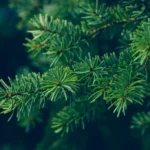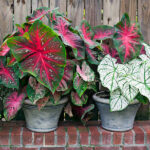Ever gazed out on a crisp winter morning, only to see your precious garden turned into a frosty wonderland? It may look like a magical scene from a postcard, but the reality is less enchanting for our green friends. Frost can be a plant’s worst nightmare, often causing severe damage or even killing them outright. But there’s good news! With the right protection, your plants can weather the frosty onslaught. One surprisingly effective weapon in this battle? The humble cardboard box. Yes, that’s right! Cardboard boxes can be your garden’s knight in recyclable armor against frost. Let’s unravel this intriguing story!
- Perfect Moving Supplies: Designed to fit clothing, books, household, kitchen, garage, basement, office supplies and other personal items for moving, shipping, storage, or small business packaging
- Heavy Duty Shipping Boxes: Holds up to 65 lbs (pounds), 32 lb (pound) edge crush tested, certified and tested to meet all single wall box storage, mailing, and freight requirements
- 25 Pack Bulk Box Value Bundle: Manufactured from Boxes Fast and brand new
- Extra Large, Large, Medium and Small Size Boxes: Made of unprinted cardboard, single-layer corrugated boxes are lightweight and sturdy, perfect for house files, business file and personal household items
- 100% Recyclable and Reusable: Simple materials, excellent performance; Made in the USA
Frost Damage in Plants
When Jack Frost visits your garden, he doesn’t leave gifts; instead, he might leave destruction in his wake. But how exactly does frost wreak havoc on your beloved plants?
To answer this, we first need to understand what frost is. Frost occurs when temperatures drop low enough for the moisture in the air to freeze and form ice crystals. These can settle on surfaces that are at or below freezing, including plants.
Plants are living beings, much like us. They are composed of cells filled with water. When temperatures drop, the water inside these cells can freeze. This forms ice crystals that rupture and damage the cell walls. Imagine your skin cracking in dry weather – only for plants, this damage is often irreversible.
Not all plants are equally susceptible to frost damage. Young plants and those that are used to warmer climates are often more vulnerable. Their cells are not adapted to survive the freezing temperatures, causing them to get ‘frostbite’. This can turn leaves black or brown, wilt plants, or even kill them.
Understanding frost damage is the first step in protecting your plants. And as we’ll soon learn, something as simple as a cardboard box can offer valuable defense. Read on to discover how!
The Science Behind Using Cardboard Boxes for Frost Protection
You might be thinking, “Cardboard boxes? How can they possibly save my plants from frost?” The answer lies in one word: insulation.
Cardboard is a fantastic insulator. This means it’s good at slowing down the transfer of heat. When you put a cardboard box over a plant, it traps the heat that the plant and the ground around it naturally give off. So, even when temperatures outside plummet, the air under the box remains a tad warmer, keeping the frost from settling on the plant.
Think of it like a cozy blanket on a cold night. Just like the blanket keeps you warm by holding your body heat close to you, the cardboard box keeps the plants warmer by trapping the heat near them.
Advantages of Using Cardboard Boxes
Besides being surprisingly effective, there are plenty of other reasons why cardboard boxes make for great plant protectors:
- Affordability: Cardboard boxes are cheap, and often free! You can reuse old boxes from deliveries or pick them up from local stores.
- Availability: No matter where you live, cardboard boxes are usually easy to find and are available in various sizes to fit different plants.
- Simplicity: No special skills are required. If you can put a box over a plant, you can protect it from frost!
Limitations and Precautions of Using Cardboard Boxes
But just like every superhero has a weakness, cardboard boxes do come with some limitations:
- Moisture Vulnerability: Cardboard doesn’t mix well with water. If it rains or snows, your cardboard protectors can become soggy and collapse.
- Size Limitation: For very large plants or trees, finding a box big enough can be a challenge.
- Ventilation: Cardboard boxes, while good insulators, can also block light and air. If left on for too long during the day, they can cause overheating or prevent your plants from breathing.
To overcome these limitations, always remove the boxes when the risk of frost has passed to allow your plants to bask in the sunlight. If rain or snow is forecast, try to cover your boxes with a waterproof material. And for those giant trees, consider other protection methods like wrapping them in burlap.
Cardboard boxes might not be perfect, but they offer a simple, cost-effective way to shield your plants from the chilly wrath of frost. So, why not give it a try? After all, every plant deserves a cozy blanket on a cold winter night!
Step-by-Step Guide to Using Cardboard Boxes for Frost Protection
Now that you know the secret power of cardboard boxes in guarding your plants against frost, let’s dive into a step-by-step guide on how to use them effectively:
- Choose the right size: Select a cardboard box that is large enough to fully cover your plant without squishing it. Leave some space for the plant to breathe comfortably inside.
- Prepare the box: If the box has any flaps, tape them shut to create a snug enclosure. You want to keep the warmth trapped inside while keeping cold air out.
- Cover the plant: Gently place the box over your plant, ensuring it covers the entire plant and touches the ground to provide maximum insulation.
- Secure the box: Use rocks, bricks, or even soil to anchor the box to the ground. This will prevent it from blowing away in gusty winds.
- Monitor the weather: Keep an eye on the weather forecast. If temperatures rise during the day, consider temporarily removing the box to prevent overheating.
- Remove the box: Once the threat of frost has passed, remove the box during the day to allow sunlight and airflow to reach your plant. This will prevent moisture buildup and ensure the plant can continue growing healthily.
Remember, your plants are like delicate treasures, and with the protection of a cardboard box, you become their guardian against frost’s icy grip.
- Heavy Duty Shipping Boxes: Holds up to 65 lbs (pounds), 32 lb (pound) edge crush tested, certified and tested to meet all single wall box storage, mailing, and freight requirements
- Perfect Shipping Supplies: Designed to fit clothing, books, household, kitchen, garage, basement, office supplies and other personal items for moving, shipping, storage, or small business packaging
- 25 Pack Bulk Box Value Bundle: Manufactured from Aviditi and brand new
- Extra Large, Large, Medium and Small Size Boxes: Made of unprinted cardboard, single-layer corrugated boxes are lightweight and sturdy, perfect for house files, business file and personal household items
- 100% Recyclable and Reusable: Simple materials, excellent performance; Made in the USA
Other Methods of Frost Protection
While cardboard boxes are an excellent option, it’s worth exploring other methods of frost protection too. Here are a few alternatives:
- Mulching: Apply a thick layer of organic mulch around the base of your plants to insulate the soil and retain heat.
- Row covers: Use lightweight fabric covers specially designed for plants. These allow air and light to pass through while providing a protective shield against frost.
- Watering: Water your plants before the onset of frost. Wet soil retains heat better, acting as a natural insulator.
- Heat sources: Consider using outdoor heating devices, such as frost blankets, heat lamps, or even Christmas lights strategically placed near your plants.
Each method has its pros and cons, so feel free to experiment and find the best fit for your garden and plants.
- This bag has been repaired due to damages to packaging during warehouse handling. Derived from the shell of the cocoa bean, natural dark, fade resistant color and pleasing cocoa aroma
- Very lightweight and easy to spread and will not burn vegetation
- Speeds soil warm-up in the spring and protects perennial root structures
- PLEASE NOTE this product is unsafe for dogs and is not for human consumption
Conclusion
Protecting your plants from frost is a crucial aspect of ensuring their health and survival. While there are various methods available, cardboard boxes prove to be a simple and accessible solution. Their insulating properties provide a cozy haven for your plants, shielding them from the freezing temperatures.
Remember to consider the limitations and precautions when using cardboard boxes. Remove them during the day to avoid overheating and provide proper ventilation. Adapt and modify the boxes to suit your plants’ needs, and always monitor the weather to ensure your plants receive the care they require.
So, the next time Jack Frost pays a visit, reach for those trusty cardboard boxes and become the hero your plants deserve. With a little love and a cardboard fortress, your plants will thrive despite the frosty challenges that lie ahead.






